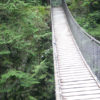No one knows exactly how the two caves which comprise Laugarvatnshellar were created or who was responsible for their creation — they are not natural caves but created by mankind — and one cave was renovated and opened to the public in the summer of 2017 to allow tourists to visit the cave people of Iceland and see how they lived approximately 100 years ago.
Laugarvatnshellar Caves: The House Built Into a Hill in Iceland

Some people have suggested that the two caves were created by Irish monks before the settlement in the year 874.

Indriði Guðmundsson and Guðrún Kolbeinsdóttir moved into the caves in 1910 as a young couple and lived there for a year. Seven years later, Jón Þorvarðsson and Vigdís Helgadóttir moved into the caves in 1918 and lived there for four years.

Both couples had some sheep, some horses and a cow; and they grew potatoes, picked wild berries, and hunted ptarmigans, which are birds of a small to medium size that are part of the grouse family. For income, they sold ptarmigans in Reykjavik and sold refreshments to travelers, local Icelandic people on their way to Reykjavik, and travelers who visited the Golden Circle.

This view is facing south from the cave house itself and shows the entrance to the area. Highway 365 is approximately two kilometers off in the distance via unpaved road. Next to the parking area is a coffee tent where you can purchase a tour of the cave house — as well as inquire about additional information. A cup of coffee and some traditional Icelandic treats are available in the tent either before or after a tour.

This view of the mountains from the cave house is towards the east. Because the surrounding landscape was excellent for livestock to graze, the caves were used for centuries as shelter for both sheep and their shepherds, who abandoned the caves after supposedly encountering some “episodes” with ghosts.

Summary
Laugarvatnshellar Cave is located off of highway 365 between Þingvellir National Park and Laugarvatn — which are part of the Golden Circle — and is approximately 66.3 kilometers east and slightly north of the city center of Reykjavík. Greater than two of those kilometers are on an unpaved rutted road from highway 365 to the unpaved driveway of the cave — driving on a washboard seemed smoother — so allow for some extra time to drive slowly even though driving time is approximately one hour and 11 minutes each way to or from Reykjavik.
Tours for Laugarvatnshellar Cave are offered daily from 10:00 in the morning through 6:00 in the evening. The first tour of each day starts at 10:10 in the morning; and tours are offered every 30 minutes until the last tour of the day, which starts at 5:40 in the afternoon. You can purchase your tour in the tent. During the tour — which lasts for 20 minutes — the guide will tell you about the lives and living conditions of the cave people, their struggles, and their happiness.
Admission is 1,900 Icelandic króna per adult, which is approximately $15.87 in United States dollars; and 950 Icelandic króna per child, or approximately $7.93. The family rate of 4,900 Icelandic króna — or $40.93 — will accommodate up to two adults and three children, which represents a savings of up to 1,750 Icelandic króna.
I was not particularly interested in the tour inside of the cave, as I personally did not think it was worth almost $16.00 — I preferred instead to use my time exploring the natural wonders of which Iceland is comprised — but that is just me. Still, if you are interested and are already visiting the Golden Circle, consider visiting this curious site in Iceland.
All photographs ©2018 by Brian Cohen.

